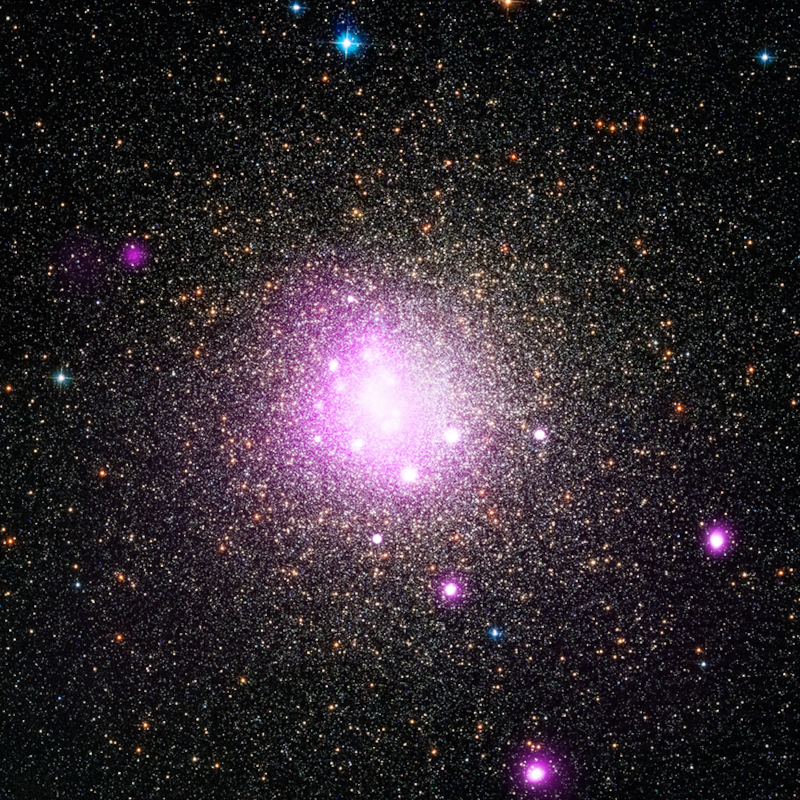
 Credit: X-ray: NASA/CXC/IASF Palermo/M.Del Santo et al; Optical: NASA/STScI
Credit: X-ray: NASA/CXC/IASF Palermo/M.Del Santo et al; Optical: NASA/STScI
Unhappy Wanderer?
The word "planet" means "wanderer". From our vantage on earth, the planets of our solar system seem to wander back and forth through the field of stars. Perhaps planets in other star fields wander too. In fact, astronomers may have seen a planet in a star cluster called NGC 6388 wander too close to a compact, burnt-out remnant core of a dead star, and get ripped apart by the dead star's inALT="Chandra X-ray and optical image of the globular cluster NGC 6388" title="Chandra X-ray and optical image of the globular cluster NGC 6388"tense gravity. At least that's one explanation for the strange burst of energy seen arising from this particular star cluster. The first clue was an outpouring of energetic X-ray radiation detected by the INTEGRAL satellite. Astronomers at first thought this outburst was produced by a black hole believed to be lurking in the center of the cluster. However subsequent high-resolution X-ray images by the Chandra X-ray Observatory showed that the transient X-ray source was not located near the center of the cluster, but instead off to one side. The Chandra X-ray image of NGC 6388 (in pink), superimposed on an optical image (in red, green and blue) is shown above. Chandra's sharp images are crucial for resolving individual sources in crowded fields to figure out what's going on. Subsequent monitoring with the Swift X-ray Telescope showed a decline in emission that some astronomers believe is characteristic of the accretion of a planet onto the surface of a white dwarf star. If a normal star in NGC 6388 was orbited by a planet, an encounter with another star may have pushed the planet from its orbit and sent it on a trajectory where it could have encountered a white dwarf. The white dwarf's intense gravity would then have been powerful enough to pull the planet apart, and material from the planet raining down on the surface of the white dwarf could have generated the bright, energetic X-ray emission.
Published: March 18, 2024
<
HEA Dictionary ● Archive
● Search HEAPOW
● Other Languages
● HEAPOW on Facebook
● Download all Images
● Education ● HEAD
>

Each week the HEASARC
brings you new, exciting and beautiful images from X-ray and Gamma ray
astronomy. Check back each week and be sure to check out the HEAPOW archive!
Page Author: Dr. Michael F. Corcoran
Last modified Monday, 25-Mar-2024 08:41:25 EDT


